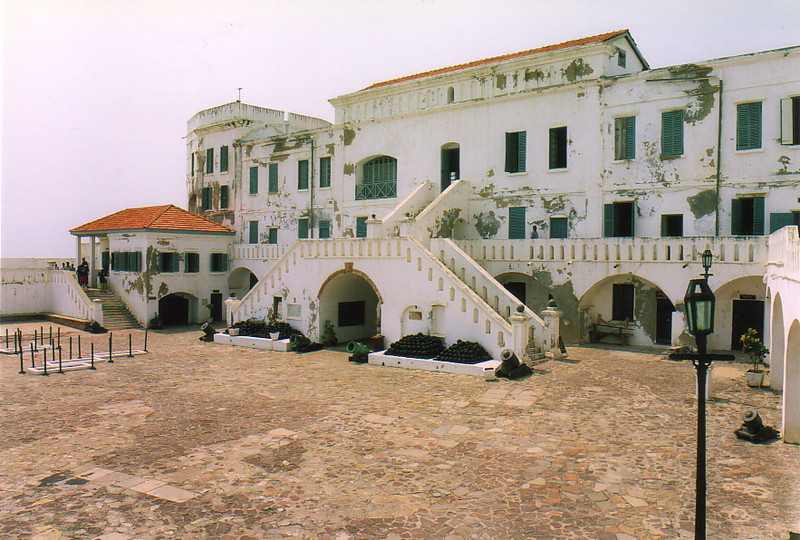
Unlikely as it might have seemed a few days ago, yesterday I finally got myself motivated to leave Kokrobite and head west to explore Ghana's historic coastline. I tempered the strain of my departure by promising myself that I'd pop back for a night before returning to Accra, but if I hadn't made a break for it quickly, I'd have been in danger of sinking deep into holiday-induced lethargy, which probably would have eaten up all my remaining time in West Africa. Kokrobite was the perfect stop for the festive season, but you can have too much of a good thing.
Having already done the journey to Cape Coast once (on the way to Kakum) it was a breeze doing it all over again, and by mid-afternoon I found myself booked into a cheap hotel in town with time to kill. Cape Coast's attractions are the kind that deserve unhurried attention, so I decided to devote the whole of today to being a tourist, and simply spent yesterday afternoon wandering around, getting a feel for the place.
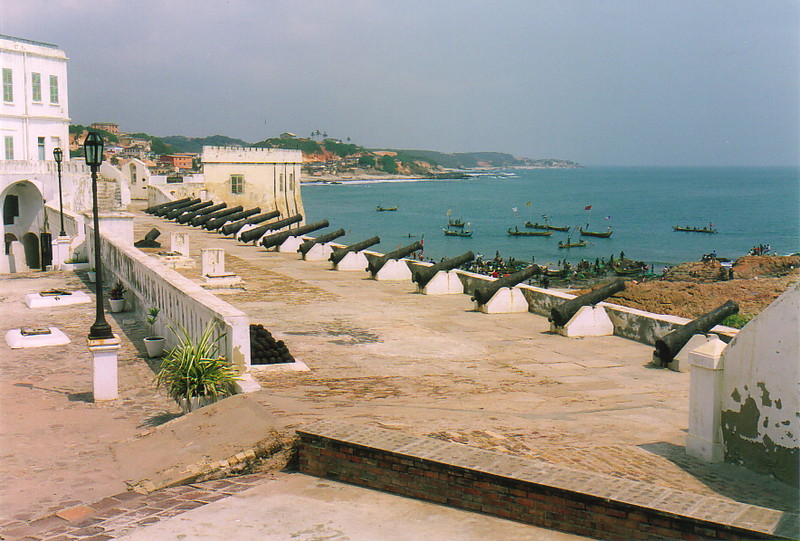
The thing that struck me most about Cape Coast was just how incredibly hassle-free and friendly the place is. Bear in mind that apart from some hurriedly curtailed activity in Kumasi and a day in Accra, I've not been anywhere terribly Ghanaian; Kokrobite village might have been in Ghana, but I don't think the Rastas' view on life is typical of the whole country, so in a sense Cape Coast was my first experience of exploring a typical Ghanaian town. Because of this I was stunned by the complete lack of intrusion as I wandered round town; in the Sahel I would have been mobbed by kids asking for cadeaux or touts trying to flog me tours of the local area, but during an entire afternoon wandering round Cape Coast I was accosted only twice, and both times the hassle was polite, benign and, after my training in Mali, amazingly easy to brush off. And not only was there practically no hassle or staring, but people were actively pleasant, smiling at me and asking 'How are you?' all the time. It was such a massive transition from the Sahel that I didn't quite know how to react, so instead I just smiled back, which seemed to work.
Indeed, the only negative thing I can think of was the astounding humidity, which made moving round town an exercise in swimming rather than walking. It's no exaggeration to say that I wandered into the restaurant for my evening meal looking like someone had dumped a bucket of water on my head, and even having a shower made precious little difference; down on the tropical Ghanaian coast getting dry is an impossibility, but it's a small price to pay for such friendly people. Your clothes might dry instantly in Mali, but I know where I'd rather be.
Cape Coast Castle
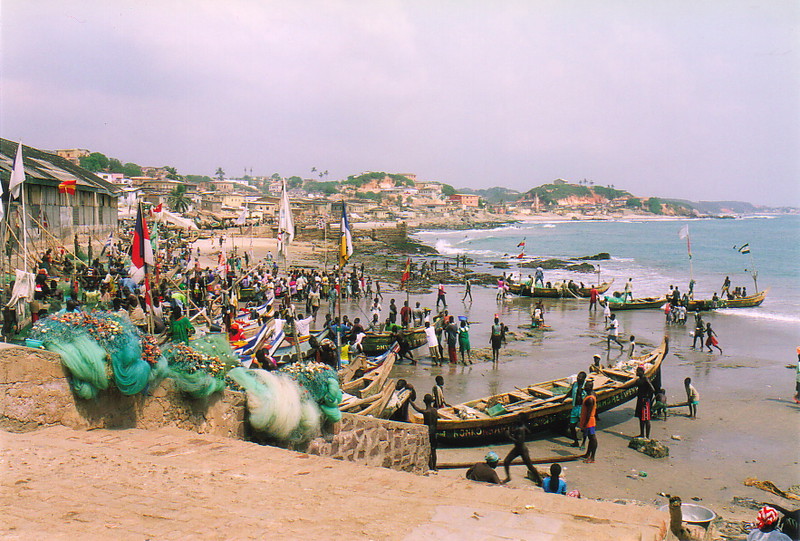
Cape Coast's main attraction is the stunning Cape Coast Castle, a World Heritage site that genuinely deserves the accolade. In nearly three months in West Africa I haven't seen anything that remotely compares to Cape Coast Castle; it's the first place I've visited here that compares to the colonial remnants in places like Malaysia and India, and I lapped it up.
I've always been a sucker for historical remains from colonial days, and Cape Coast initially reminded me of the Portuguese fortress on the island of Diu, off the west coast of India. Both castles preside over the pounding waves, both have rows of cannons lined up and aiming at an imaginary enemy, and both have the same faded air of colonialism and the futility of global empire building. But that's where the similarity ends, for while Diu was a distant and lonely outpost of a colonial power that had long since lost its influence and where nothing much happened apart from the odd invasion from the locals, Cape Coast Castle was the nerve centre of British colonial rule in the Gold Coast (the colonial name for Ghana) and, more importantly, it was one of the biggest trading posts in that most abhorrent of all cargoes, slaves.
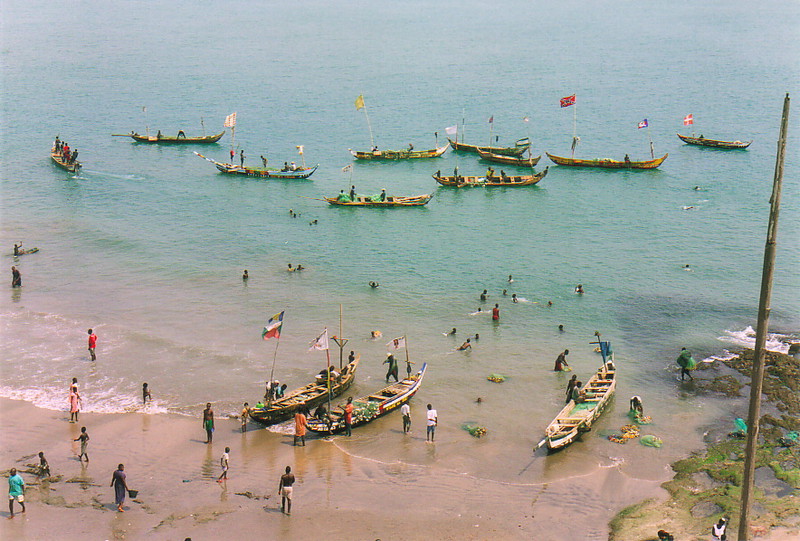
Yesterday I skirted the outside of the fort, but from the outside Cape Coast Castle is pretty unprepossessing; it sits on the coast like a squat, friendless building that slowly peels its white paint into the streets below, and it doesn't look as impressive as you might expect a World Heritage coastal fort to look. It doesn't sit on top of a cliff surveying its domain, it doesn't have fairy-tale turrets and big towers looming over the town, and it doesn't have anything exciting like a moat, but once you walk through the front door and pay your entrance fee the atmosphere starts to build. It's subtle at first, but after a while you realise that this place has seen some serious history, and a lot of it is highly disturbing.
A Short History of Cape Coast Castle

The first thing I visited in Cape Coast Castle was the excellent museum housed in one of the castle wings. As I've already mentioned, Cape Coast Castle is a UNESCO World Heritage site, as are the two forts in neighbouring Elmina, and a lot of effort has been invested in justifying this accolade. The museum is just one of the results; the excellent guided tours are another, and ongoing restoration work (complete with its own museum) is a sign that its World Heritage status is being taken seriously. I spent hours in the museum – indeed, I had to be wrenched away to attend my guided tour, after which I returned to finish lapping up every detail about the castle – and without a doubt it's the best museum I've yet seen in West Africa. OK, this isn't necessarily saying much, but I found out a lot about the history of Cape Coast Castle, and it fascinated me.
The origins of the castle are obscure. The name Cape Coast comes from the Portuguese cabo corso ('short cape'), and it's known that from the 1480s the Portuguese came here to trade with the Fetu tribe, who at that time lived along the coast between Cape Coast and Elmina. In 1482 the Portuguese built a fortified trading post at Elmina – the first European building in sub-Saharan Africa – but it wasn't long before other European nations had sniffed the scent of big profits, and during the 1600s and 1700s a varied collection of forts and trading posts appeared. In total, 60 forts lie along Ghana's 300-mile stretch of coast, although the vast majority have crumbled into nothing and quite a few of those remaining are off-limits to the public; for example, Ussher Fort and James Fort in Accra are now prisons, and Osu Fort, also in Accra, is the seat of the Ghanaian government and you're not even allowed to take pictures of it.
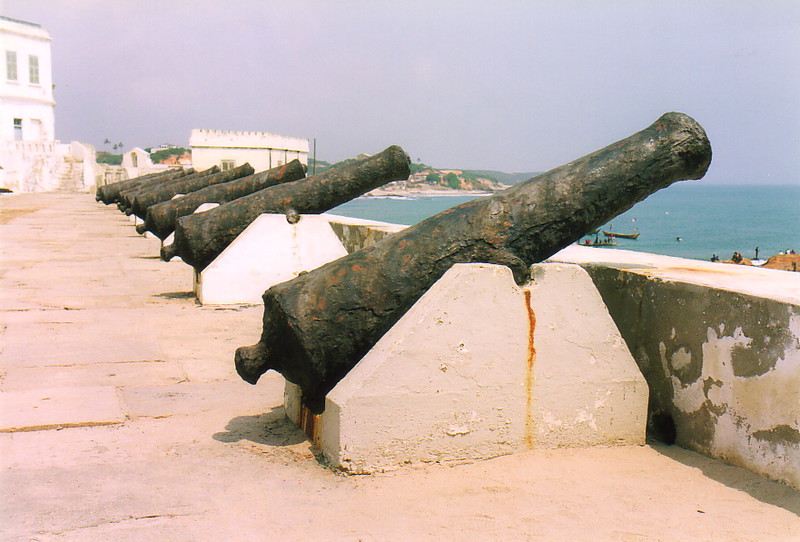
Given this level of activity, it was only a matter of time before the colonial powers started attacking each other's castles. Forts changed hands seemingly every few years, and Cape Coast was no exception; in 1637 the Dutch attacked and captured nearby Elmina, which up to that point was the centre of Portuguese activity in West Africa. This ended Portuguese influence in the area, so by default the Dutch controlled Cape Coast. In 1650 the King of the Fetu granted permission to an English sea-captain to build on the cape, and in the same year he also granted the same permission to Henry Caerlof, a Swiss man who had previously worked for the Dutch and who sailed under the Swedish flag. By 1655 a house had been built on the cape, and over the coming years it was enlarged using slave labour into Carolusburg Fort, named after the then Swedish king. This fort was captured and enlarged by the Danish in 1657, and after a few more shuffles of power the English got their hands on it 1664, just in time for the Anglo-Dutch war of 1664-1668.
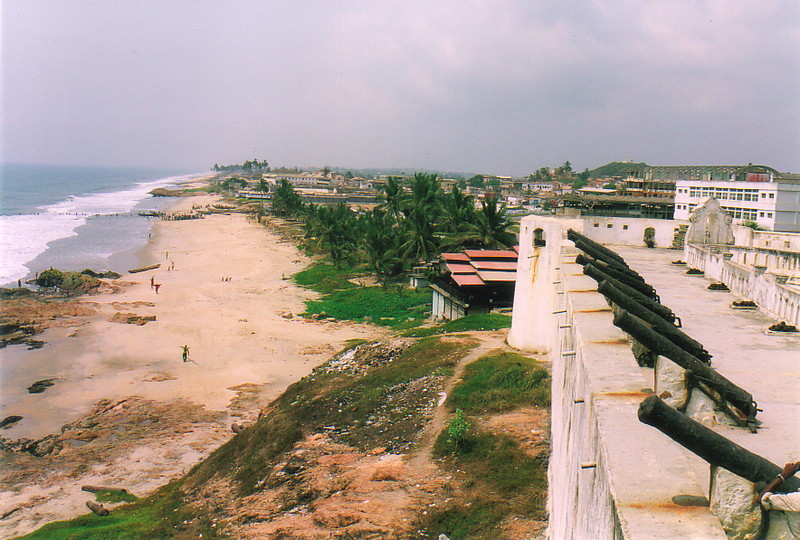
My favourite story of the Anglo-Dutch war concerns Fort Kormantin in Abanze, 32km east of Cape Coast (incidentally, this is the fort where Louis Armstrong claimed his ancestors had been sent from when enslaved). Fort Kormantin was built by the Dutch in 1598, but the English captured it and rebuilt it in 1645, naming it Fort York and thereby creating the first English settlement along this coastline. In 1664, over in the Americas, the English captured New Amsterdam and renamed it New York, so as a metaphorical V-sign to the English, the Dutch captured Fort York in 1665 and renamed it Fort Amsterdam.
Cape Coast, however, remained an English fort throughout the war, became the centre of English administration of the Gold Coast until the capital moved to Accra in 1877, and only changed hands again at Ghana's independence in 1957. Cape Coast was most definitely the daddy of all Ghana's forts.
The Slave Trade
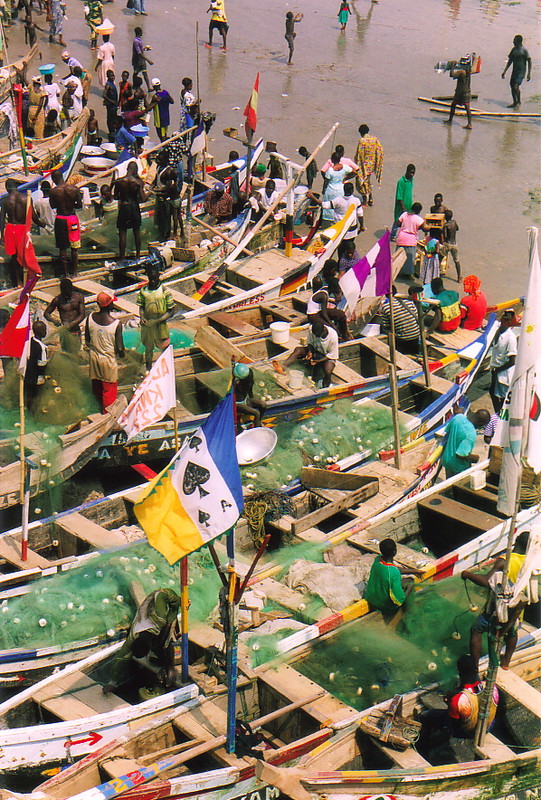
So far all I've talked about is the history of the colonial powers fighting over tracts of land in faraway West Africa, but the thing that makes Cape Coast such a harrowing place is its role in the slave trade. So much has been written about the slave trade that I doubt I can throw any new light on this shameful episode in human history, but a potted history wouldn't go amiss.
The slave trade was operating well before Europeans started building slave forts along the West African coast. Indeed, slaves had been bought and sold along the trans-Saharan trade route since pre-Roman times, and with the expansion of Islam in the eighth century, things really started taking off; each year from around 800 AD to the 1600s, between 5000 and 10,000 slaves were exported from the African continent, mainly via North Africa, the Red Sea, and the East African coast.
The smell of gold brought the Europeans into contact with West Africa, and between the 1480s and the 1590s the Portuguese made huge amounts of money from trading gold. However this wasn't enough, so to increase their profits they moved into the already-thriving slave trade, and between 1485 and 1540 some 12,000 slaves were imported by the Portuguese and sold to gold merchants from places as far away as Mali. Thus the Europeans got their first taste of the profits that could be made from the sale of humans, a taste that wouldn't turn sour until the 19th century.
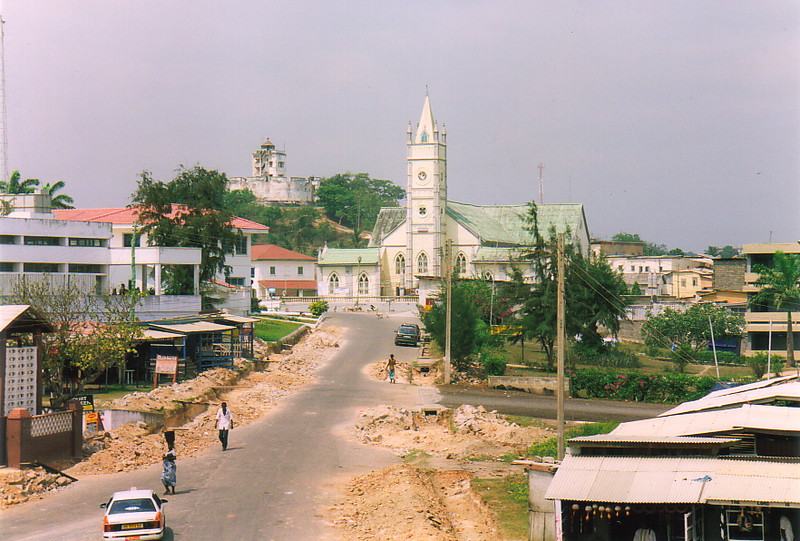
With increased European presence in West Africa, the slave trade started to escalate. It wasn't long before a triangular trade system was in place, with ships leaving Europe for West Africa stocked up with textiles, metal, guns, rum, tobacco, ceramics and beads. In West Africa these goods would be traded for gold, ivory, pepper and slaves before heading for the New World, where the slaves would be sold to work on the plantations, in exchange for sugar, cotton and tobacco. Each ship might have taken between 18 months and three years to complete the journey, but the profits to be made at each stage were well worth the investment in ship and crew, and the European powers started building their empires on slave labour.
African slaves were captured in a number of different ways, but the most common was for the Europeans to encourage inter-tribal wars. These would produce prisoners of war on each side, who could then be sold to the Europeans in exchange for goods like guns; these arms could then be used to capture even more neighbouring tribesmen. Another way of turning a profit was for tribes to sell their criminals to the Europeans, an eerie precursor of the English policy of shipping convicts out to America and Australia, but however the slaves got captured they would end up somewhere like Cape Coast, ready to be shipped to the Americas.
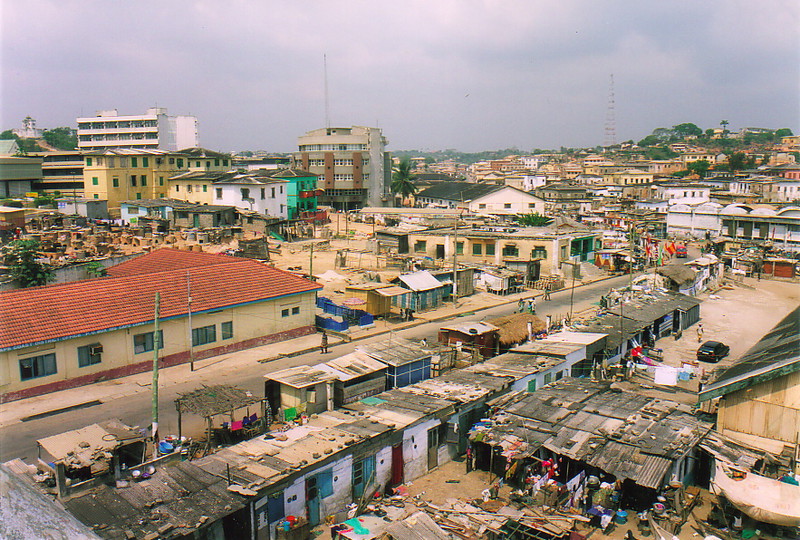
Cape Coast Castle has slave dungeons that make the cubbyholes on Île de Gorée look like the storage cupboards they probably are. Around 1000 male slaves and 500 female slaves would be stored in the castle at any one time, and most of them would be locked up in the dungeon for six to 12 weeks, waiting for the slave ships to dock. They would be allowed out for fresh air two or three times a week, but apart from that they were imprisoned in dark, dank dungeons that would have been utterly disgusting. The dungeons today are empty, echoing chambers that barely hint at what they would have been like with hundreds of slaves crammed in there, but with only a handful of barred windows to let in the breeze and a rough channel down the middle of the cells to carry away urine and faeces, it would have been repugnant.
Conditions on the slave traders' ships were even worse, as depicted in that famous plan drawing showing slaves crammed into every nook and cranny of a ship, genuinely as close as sardines in a can. It's futile to even attempt to imagine what it was like to be wrenched from your home and family, dragged to Cape Coast Castle and left to rot for two or three months in the dungeon, before being jammed into a slave ship where between a quarter and a half of the slaves would die before reaching the Americas. Even assuming you survived the trip, you then had to contend with living the life of a slave, forever exiled from your home.
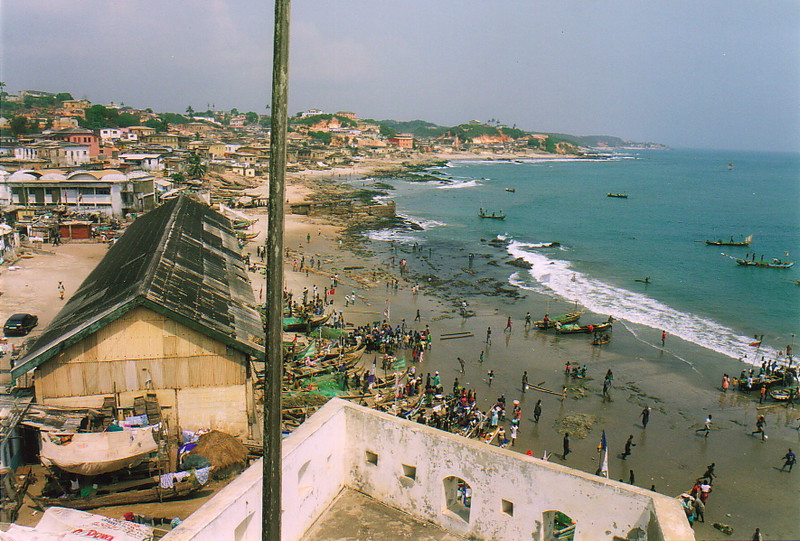
Estimates of the number of slaves transported from Africa vary from 12 million to 25 million – one estimate says that in 1700, at the height of the slave trade, more than 650,000 slaves were exported in that year alone – but whatever the numbers, they're huge, and most of these slaves came from West Africa and the Congo-Angola region. The trade started in the 1500s and over the next 300 years they were shipped out in what has become known as the African Diaspora, with one-third ending up in Brazil, one-third in the Caribbean islands and the rest throughout the Americas. The slave trade did not completely end until the 1870s, though Britain abolished its slave trade in 1807, signalling an end to Cape Coast's role in transporting slaves.
The numbers are interesting but hard to imagine; they're just too big. Indeed, the most effective display I saw in the Cape Coast museum was an innocent little poster that proclaimed a forthcoming sale of slaves; it was so weird, I copied it down:
To Be Sold & Let
By Public Auction,
On Monday the 18th of May, 1829,
Under the Trees.
For Sale,
The Three Following
SLAVES,
Viz.
Hannibal, about 30 Years old, an excellent
House Servant, of good Character.
William, about 35 Years old, a Labourer.
Nancy, an excellent House Servant and Nurse.
The Men belonging to "Leech's" Estate,
and the Woman to Mrs D Smit.
Also for Sale, at Eleven o'Clock,
Fine Rice, Gram, Paddy, Books, Muslins,
Needles, Pins, Ribbons &c. &c.
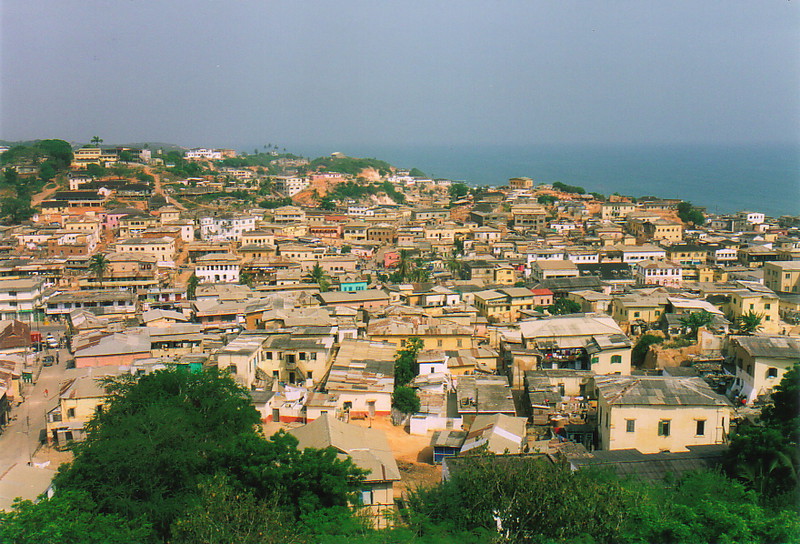
The bit that really hits me is the section at the end; I think it sums up the inhumanity of the slave trade rather well, but not by talking about numbers, or being crammed into dungeons in remote castles, or the nightmare of being shoehorned into a ship so tightly that you can't sit up, with the faeces and vomit of the people above dripping down on you as you lie there in the dark. The notice above, to me, denotes the real human tragedy of the slave trade; back then it was socially acceptable and indeed normal to think of your fellow man not as a human being, but as an object to be sold at the same time as rice, books, muslins and needles. Thankfully most of the world has moved on and human rights are now centre stage; one sincerely hopes the human race will never print posters like this again.
Touring the Castle
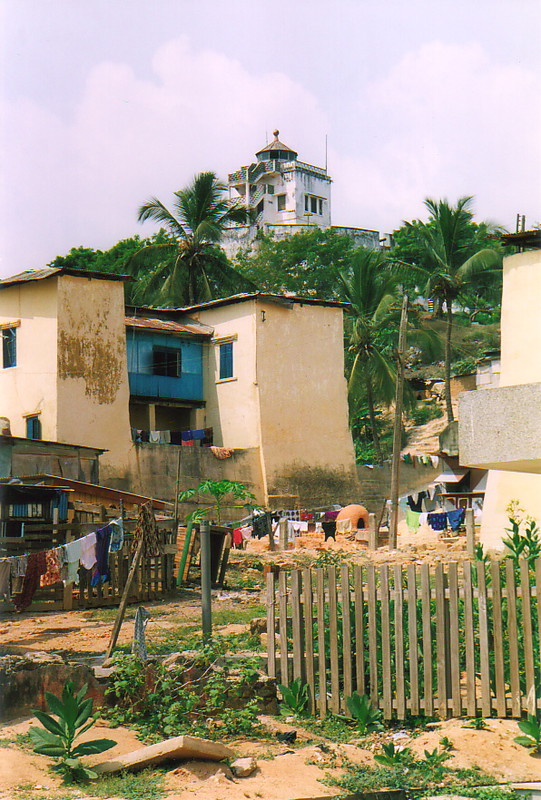
There's no doubt that the highlights of Cape Coast Castle are the museum and the dungeons, but there are plenty of other historical touches that bring the place to life. One of the more life-affirming is the fact that when the British abolished slavery they walled up the entrance of the tunnel that leads from the male dungeon to the beach where the slave ships would drop anchor; not only this, the Fante tribe have turned this walled section into a shrine to their local gods, because there used to be a shrine on the site of Cape Coast Castle before the Europeans stuck their oars in, and it's now back in operation, smothered in animal skins, wine, schnapps, bowls, cloths and various other bits and bobs. Meanwhile the tunnel to the beach was converted by the British into a cistern for fresh water, a huge improvement on the previous use; it's good to see a guilty conscience being put to good use...
The castle itself is a delight too, and it's in good condition, despite the peeling white paint that makes it look like an obruni wilting in the tropical humidity. The fort went to seed a bit under British rule, especially after the capital was moved to Accra, and by 1960 it was home only to the town's main post office, the law courts, the port's customs house, and a prison in one wing of the fort. In the 1960s the post office and law courts moved out of the castle grounds and into the town; then, in 1962, Cape Coast port was closed to international shipping, and the customs house was closed and became derelict (it was demolished in 1996). Finally, in 1993 the prison was closed, well after the public had started to visit the fort; this was no doubt because the tour through the governor's quarters accidentally enabled nosy foreigners to see first-hand what it's like in a Ghanaian prison.
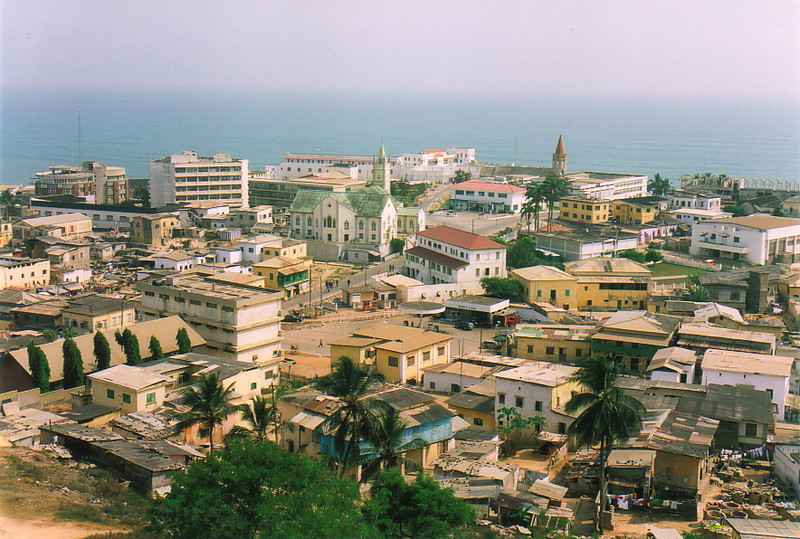
The big change came in 1979 when the fort was listed as a World Heritage site, and in 1989 the present renovation was started, with big strides being made throughout 1991. Looking at the photos, the paint has faded and peeled since that renovation, but the results are still spectacular. Cape Coast reeks of atmosphere, with its battlements stocked with rows of black cannons; the piles of cannon balls ready to be hurled 3km at enemy ships; the nasty little cell in the corner of the courtyard where slaves who tried to escape or revolt were locked up until they simply died of starvation; and the comparatively luxurious quarters for the British governors with their lovely views along the coast.
I spent hours soaking up the atmosphere in my atmospherically soaking clothes, and that was before I'd even thought about the other forts Cape Coast has to offer.
Fort William and Fort Victoria
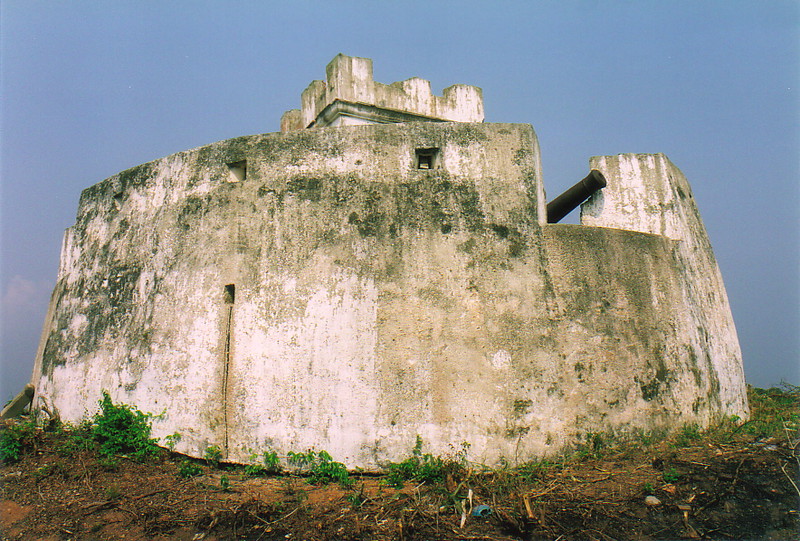
I figured I might as well visit the two other forts in Cape Coast, even though they're completely eclipsed by Cape Coast Castle. They're nothing special but I like walking, and as these two forts are both perched on the tops of hills, I gave in to the male compulsion to conquer every peak, no matter how small. In Cape Coast Castle there are two turrets on opposite ends of the battlements that look out directly at the two other forts; this is because the two smaller forts functioned as look-out posts that could signal the main castle in case of invasion from the sea. These glimpses were just enough to whet my appetite, so off I went.
Fort William was built in 1820 and was converted into a lighthouse when Cape Coast was a busy port; unfortunately it no longer functions as a lighthouse due to the rather glaring lack of a light, but it's now a home for people who work in the castle and a friendly local let me in to climb to the top for some wonderful views of the town. The atmosphere was somewhat tempered by the faded colours of the washing that they'd draped over the cannons, but at a stretch I could imagine a lonely scout on duty up here, sighting an invasion force out in the Gulf of Guinea and hurriedly lighting his lamp to signal the castle.
Fort Victoria was even more lonely and consisted of nothing more than a round wall with a small square turret in the middle. Being stuck out here on guard duty would be seriously boring, but at least the view was pleasant, and there was even a small breeze to remind me just how utterly sweaty I'd become. And with that thought, I returned to my hotel, happy to have experienced the power of historical Cape Coast.